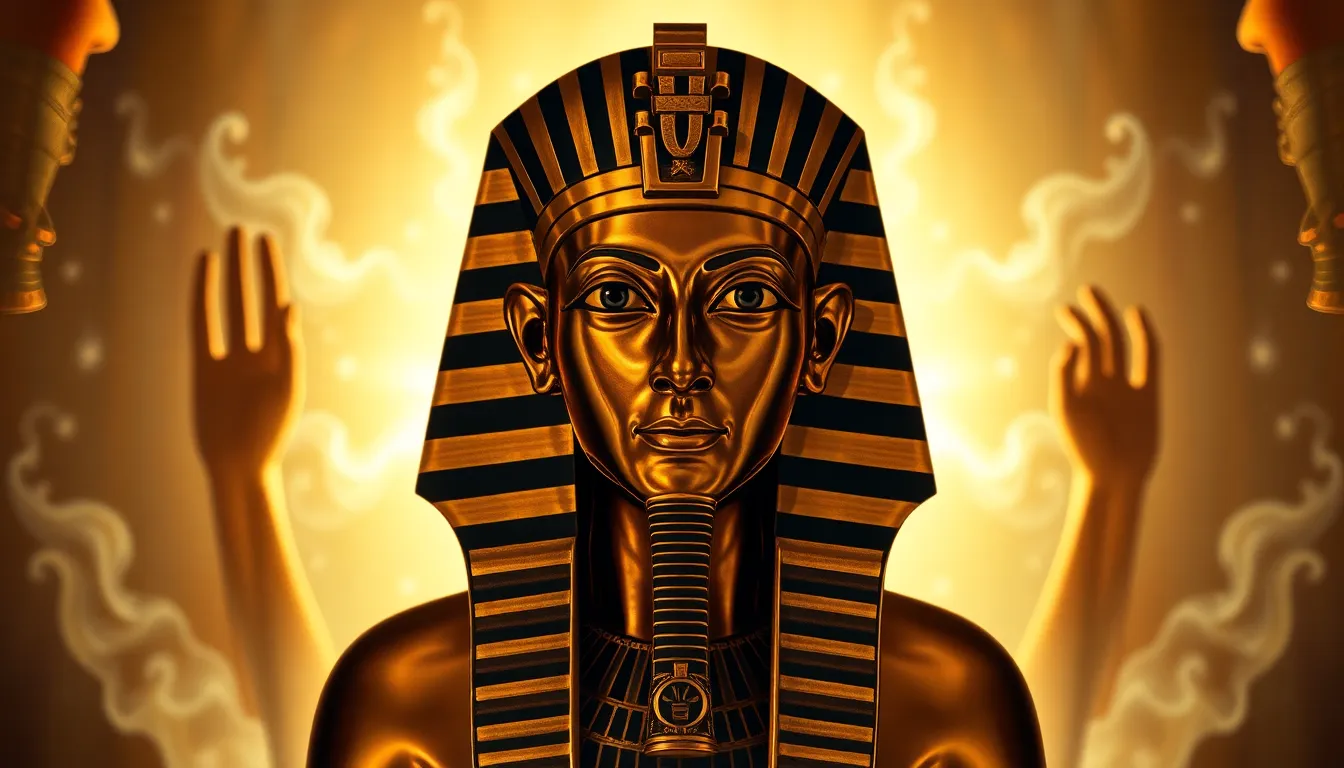Tutankhamun: Unraveling the Myths of the Boy King
I. Introduction
Tutankhamun, often referred to as the Boy King, is one of the most famous pharaohs of Ancient Egypt, primarily due to the discovery of his nearly intact tomb in 1922. His reign, though brief, has captured the imagination of historians, archaeologists, and the general public alike. This article aims to delve into the historical significance of Tutankhamun while unraveling the myths that have surrounded him, providing a clear understanding of his life, reign, and legacy.
II. The Rise of Tutankhamun
Tutankhamun ascended to the throne during a tumultuous period in Ancient Egyptian history. He became king at approximately eight or nine years of age, following the death of his predecessor, Akhenaten. The political landscape was complex, influenced heavily by the religious upheavals initiated by Akhenaten, who attempted to shift worship from the traditional pantheon to the sun disc, Aten.
Key figures played a significant role in Tutankhamun’s early reign, including:
- Aye: A powerful advisor and likely a guardian during Tutankhamun’s youth.
- Horemheb: A military leader who would later become pharaoh himself.
This period marked a return to traditional polytheistic practices and the restoration of the temples that had fallen into disrepair during Akhenaten’s rule.
III. The Legacy of the Boy King
Tutankhamun’s reign, though short-lived, had a lasting impact on Egyptian culture. His most notable contributions include:
- Religious Reforms: Tutankhamun reinstated the worship of the traditional gods, which was a significant shift from his father’s monotheistic practices.
- Art and Architecture: His tomb, filled with exquisite artifacts, showcases the artistry of the period and reflects the wealth of the pharaohs.
The influence of his reign can be seen in the subsequent pharaohs who sought to restore the traditional values and practices that Tutankhamun championed.
IV. The Discovery of the Tomb
The discovery of Tutankhamun’s tomb by Howard Carter in 1922 marked a watershed moment in archaeology. After years of searching, Carter’s team uncovered the tomb in the Valley of the Kings, revealing a wealth of treasures that had lain untouched for over three millennia.
The significance of the tomb’s treasures cannot be overstated. Among the thousands of artifacts were:
- The famous golden mask of Tutankhamun.
- Jewelry, statues, and chariots.
- Everyday items intended to accompany the pharaoh in the afterlife.
This discovery ignited a media frenzy, with reports of the tomb’s riches captivating the public imagination and leading to a renewed interest in Ancient Egypt.
V. Myths and Misconceptions
Over the decades, numerous myths and misconceptions about Tutankhamun have emerged, including:
- The “Curse of the Pharaohs”: A narrative suggesting that those who disturbed the tomb would suffer misfortune or death. This myth was fueled by the unexpected deaths of several individuals associated with the discovery.
- Misunderstandings about his death: Various theories have circulated regarding the cause of his death, ranging from murder to an accident. The circumstances surrounding his demise remain one of the enduring mysteries of his life.
- Portrayal in popular culture: Tutankhamun has been depicted in numerous films, books, and exhibitions, often exaggerating aspects of his life and reign for dramatic effect.
VI. Scientific Advances in Tutankhamun Research
Recent advancements in archaeological techniques have provided deeper insights into Tutankhamun’s life and death. Modern methods include:
- DNA Analysis: Studies of genetic material have helped researchers understand familial relationships within the royal family.
- CT Scans: Non-invasive imaging techniques have revealed details about Tutankhamun’s health and the condition of his remains, suggesting he suffered from various ailments.
These scientific investigations have led to a reevaluation of historical narratives about Tutankhamun, shifting some long-held beliefs based on new evidence.
VII. Tutankhamun’s Influence on Modern Culture
The legacy of Tutankhamun continues to resonate in modern culture. His influence is evident in:
- Art and Literature: Many artists and writers have drawn inspiration from his story, incorporating themes of ancient Egypt into their works.
- Current Exhibitions: Traveling exhibitions of artifacts from his tomb educate the public and promote interest in ancient civilizations.
- Ongoing Fascination: The allure of Ancient Egypt, fueled by Tutankhamun’s story, continues to attract scholars, tourists, and enthusiasts around the world.
VIII. Conclusion
In summary, Tutankhamun’s life and reign offer a fascinating glimpse into Ancient Egypt, marked by significant cultural and religious transitions. The myths surrounding the Boy King, fueled by media sensationalism and popular culture, often obscure the truth of his legacy. The ongoing research and discoveries related to Tutankhamun not only enhance our understanding of this pivotal figure but also highlight the enduring mystery and allure of Ancient Egypt. Today, studying the life of Tutankhamun remains relevant as we seek to connect with the past and understand the complexities of human history.




